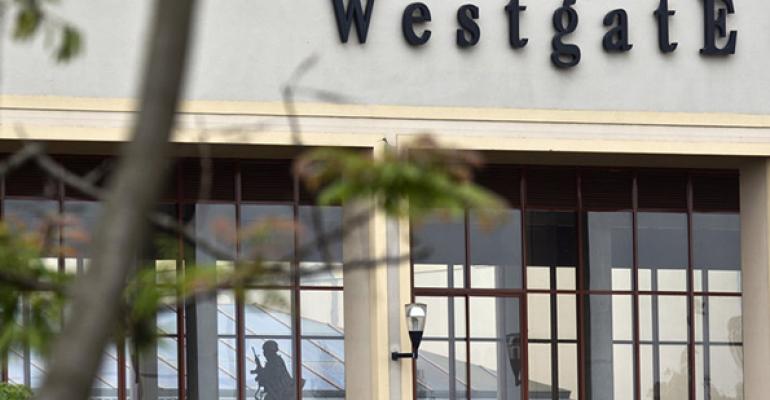Murder. Assault. Carjacking.
These violent crimes, along with other non life-threatening crimes, can happen at any public venue, including a mall or shopping center. Earlier this year, for example, a lone gunman walked into a mall in Columbia, Md., killed two employees and injured five other people before turning the gun on himself.
Because malls are open to the public, they are vulnerable to all sorts of crime, mostly opportunistic. But some of it is planned. Consider the deadly terrorist siege at Westgate mall in Nairobi, Kenya, in September 2013. The attack, which killed about 60 people, was a wakeup call for property owners and managers everywhere. This month’s hostage-taking standoff at a popular coffee shop in Sydney, Australia, which resulted in the death of two innocent people, only reinforced the idea that safety is not to be taken for granted.
“Our world has changed,” says Karen Raquet, executive vice president and director of property management for JLL Retail, the largest third-party manager of retail properties in the U.S. “These incidents are not only happening abroad, but they’re also happening in schools and in government buildings. To not be aware of them… to not take a proactive approach… that would be like putting your head in the sand.”
And in addition to the human toll, mall owners may be held accountable for not protecting their customers. A lawsuit recently filed against Westfield claims the Australian REIT was negligent in not providing enough security to prevent the deadly shooting of three people in the parking lot of Mission Valley Mall in San Diego on Christmas 2013.
As a result, mall owners and managers have expanded their security programs beyond vandalism, brawling and theft to protect against lone shooters and terrorism, both domestic and international. ICSC estimates a typical mall spent more than $1 million on security in 2013.
“You can’t stop people from coming into the mall,” says Bud Bradley, vice president of national accounts portfolio management for AlliedBarton Security Services, which oversees security for 250 to 300 retail properties across the country. “The only thing you can do is mitigate and minimize the number of crimes and causalities.”
Security experts say communication between mall owners, managers and tenants is key to creating a safe environment. Moreover, collaboration with local and federal law enforcement is increasingly a priority.
Enhancing communication
Preventing crime is the primary goal of any security program, but it’s important to be prepared for those times when crimes do occur. Communication plays a huge role in preparing for and managing an active crisis.
“In the past, owners and managers left it up to the tenants to educate and train their own people,” Bradley says. “Now there’s an effort to communicate with retailers and their employees so they know exactly what to do in the case of a lone shooter, for example. We share the plan with them so they know that they need to get out of the mall instead of sheltering in place, getting trapped, potentially ending up in a hostage situation.”
Being able to communicate during a crisis is a priority for JLL, according to Raquet. “As I watched the coverage of the mall shooting in Columbia, Maryland, I realized we needed to rethink the way we communicate from a security standpoint,” she says.
JLL recently implemented an emergency notification system across its mall portfolio. The system, known as RedFlag, provides mass emergency notification on a host of possible threats and dangerous situations, as well as other non-threatening events. Notifications can be sent using multiple channels, including text, e-mail and voice messages, as well as posts on popular social media sites like Facebook and Twitter.
“By utilizing RedFlag, we are better able to facilitate quick and timely communication during an emergency,” Raquet says. “We’ve used it several times already for weather-related emergencies.”
Bradley says technology has enhanced security-related communication, particularly for security officers. “In the past, officers used two-way radios to keep in contact with the command center. Today, they carry iPads or PDAs, which provides instant communication and the ability to report incidents on the fly, see images of suspicious people, connect with local law enforcement and even read social media posts concerning the mall.”
Emphasizing collaboration
Security experts contend that a strong security program must include collaboration with local and federal law enforcement, as well as other first responders.
“It’s crucial that mall owners, managers and security officers have a relationship with local police and fire departments, and even FBI offices,” Bradley says, adding that this emphasis on collaboration represents an attitude shift. “There’s a greater sense of teamwork than ever before. These relationships just didn’t exist years ago.”
AlliedBarton considers collaboration so important that it requires its security personnel to meet with local law enforcement representatives several times a month to discuss what’s happening in the surrounding community and how it could impact the safety and security of the malls they’re in charge of protecting. Moreover, the firm uses crime data from the local police department and FBI to determine how it deploys its security officers.
For example, AlliedBarton collaborated with a local police department to bring down a ring of car thieves. “We worked with the police department to put a bait car in the mall parking lot, and together, we were able to apprehend these individuals,” Bradley says.
Similarly, JLL conducts training sessions and after-hours emergency and evacuation drills with local police departments and the FBI to prepare its managers, tenants and security personnel for crisis situations and other types of crime.
“The safety of our shoppers, tenants and employees is our priority, and working closely with law enforcement is one of the best ways to keep them safe,” Raquet says.

